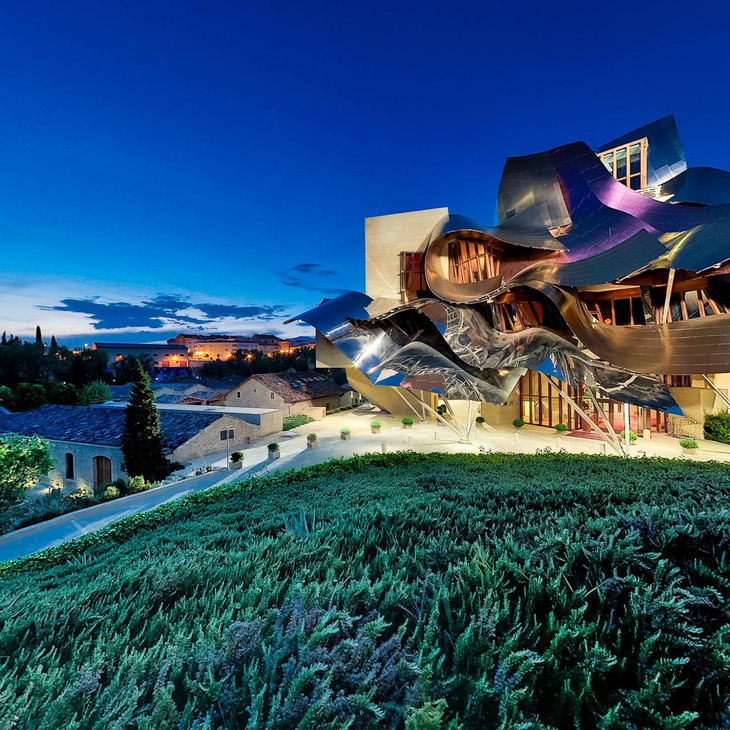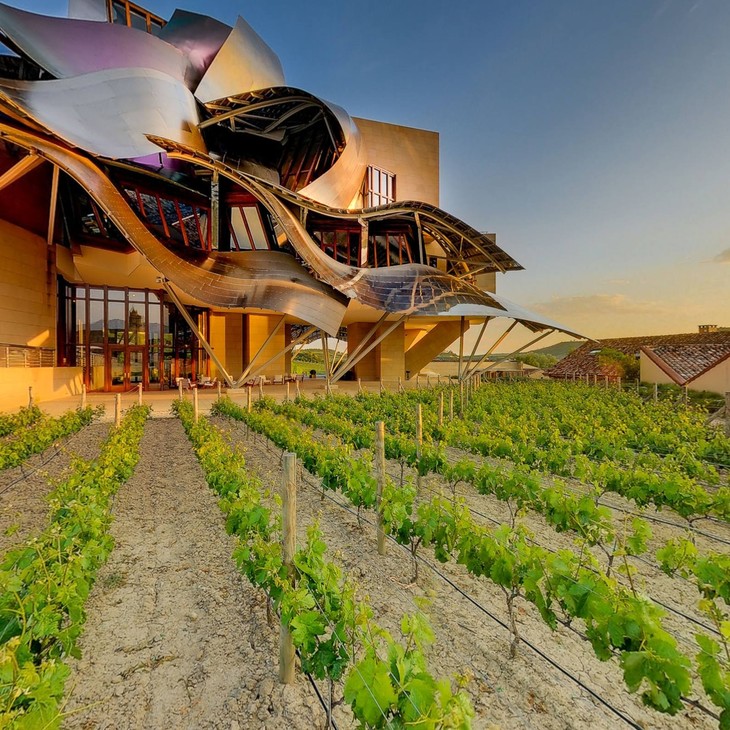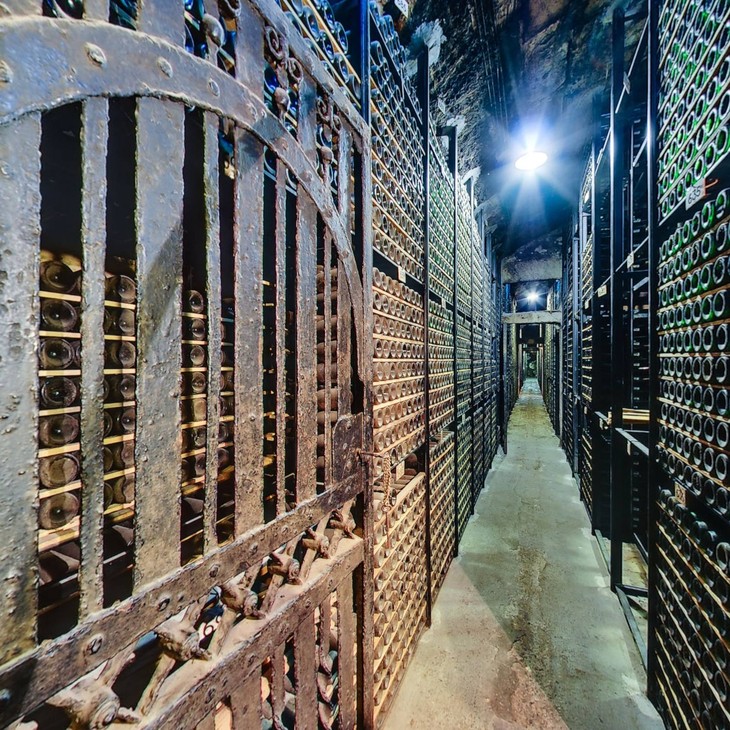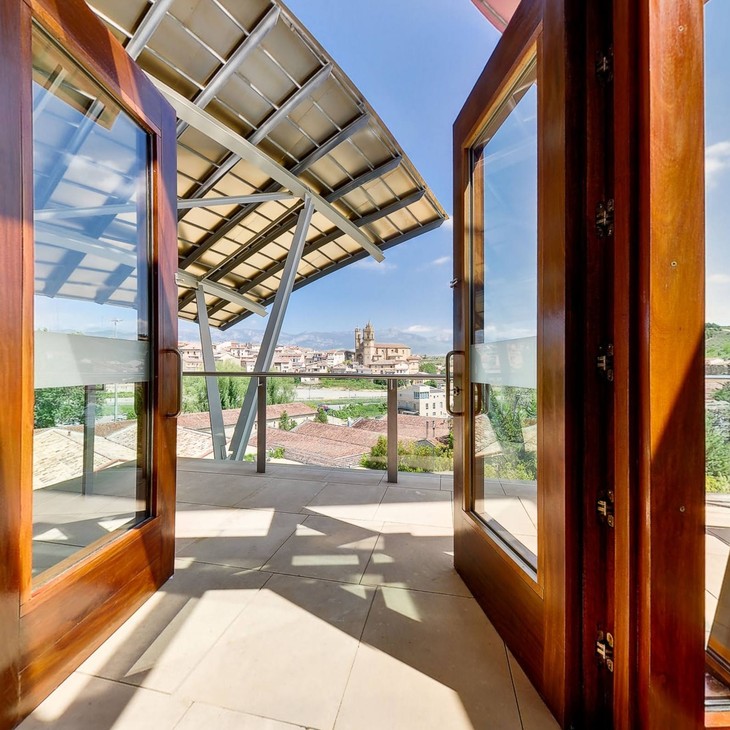On a hill overlooking the town of El Ciego is a building, which, from a distance, looks like flowing ribbons, made of metal and glass.
Even those who don't drink will love a visit to this winery. The Marqués de Riscal City of Wine is a place where wine culture invades your five senses. You can taste a glass of good red while you take in the architectural work of Frank Gehry, breathe in the smell of the vines, listen to the wind in the leaves and experience the pleasure of a wine therapy session on your body. What more could you ask for?

Located in the town of El Ciego, in Alava, this winery has succeeded like few in creating a world of proposals around its alma mater, wine. For this reason, it has built its own City of Wine, a complex comprising the historic Marqués de Riscal winery (1858), the oldest in Rioja.
This wine emporium didn't come from nowhere, it is the result of centuries of working with vines and the fruits they produce. During the 16th and 17th century these vineyards expanded exponentially, and by the early 19th century wine production had reached 1.8 million litres, making this the most important town in the entire Alava region of Rioja in terms of production
The eye-popping architecture of the Hotel Marques de Riscal makes a real statement; designed and built by Frank O. Gehry who Vanity Fair labelled ‘the most important architect of our age’. Glass-walled rooms offer views of the medieval town of El Ciego where history and culture flourish like the grapes hanging from their Rioja vineyards.

The transformation of the winery is a bridge between the 19th and 21st century for its owners, and Gehry's intervention was an important innovative element. Its building, which could be called sculptural, is now an iconic element of the landscape of El Ciego, with a characteristic curved titanium-covered outside that twists to show the chromatic tones of the winery: reds similar to wine; the gold of the mesh used by the winery; and the silver of the capsule of the Marqués de Riscal bottle.
The red wines of the "Marqués de Riscal" series are both traditional and modern Riojas. They are made using the latest technology but are loyal to tradition, with the excellent grapes of the best-known local Rioja varieties (tempranillo, graciano and mazuelo) and high quality barrels. The winery has a range of wines with Designation of Origin Rioja, which it has been producing since 1858. One of the most outstanding is its Frank Gehry selection red, 100% tempranillo, with an intense colour and potent aroma combined with a complex and open expression in the mouth. In terms of its white wines, Marqués de Riscal can boast having the largest vineyard of the Designation of Origin Rueda.

The winery offers daily-guided tours, lasting approximately an hour and a half, which show you the winemaking process as well as a small wine-tasting session with appetisers.
Gastronomy is certainly the order of the day if you decide to visit the restaurant. With three Michelin stars to his name, who better than Chef Francis Paniego, to oversee your hotel dining experience.
You can order straight from the menu or perhaps try one of a number of ‘tasting ceremonies’, ‘degustaciones’, where you can enjoy a selection of their premium dishes. Needless to say, the wine list is to die for. The spa has won 3 international awards for excellence and offers you the chance to submerge yourself in the Jacuzzi, hit the fitness centre or soak your feet in the pediluvium (foot bath). Specialist treatments include hydrotherapies like the Barrel Bath, where you soak in an exfoliating grape marc, and the ritualistic Winemaker's Massage, which increases blood circulation and improves muscle tone.

The hotel offers local tours as well, exploring the Basque-flavoured culture around the area. As a border town between the Navarre and Castille kingdoms, the village has seen a fair amount of history in its nearly 1000 years. With the hotel as a piece of 21st-century imagination, the juxtaposition is an interesting look at the transformation of architecture. Glass rooms overlook the village below like a futuristic castle over an ancient feudal town.